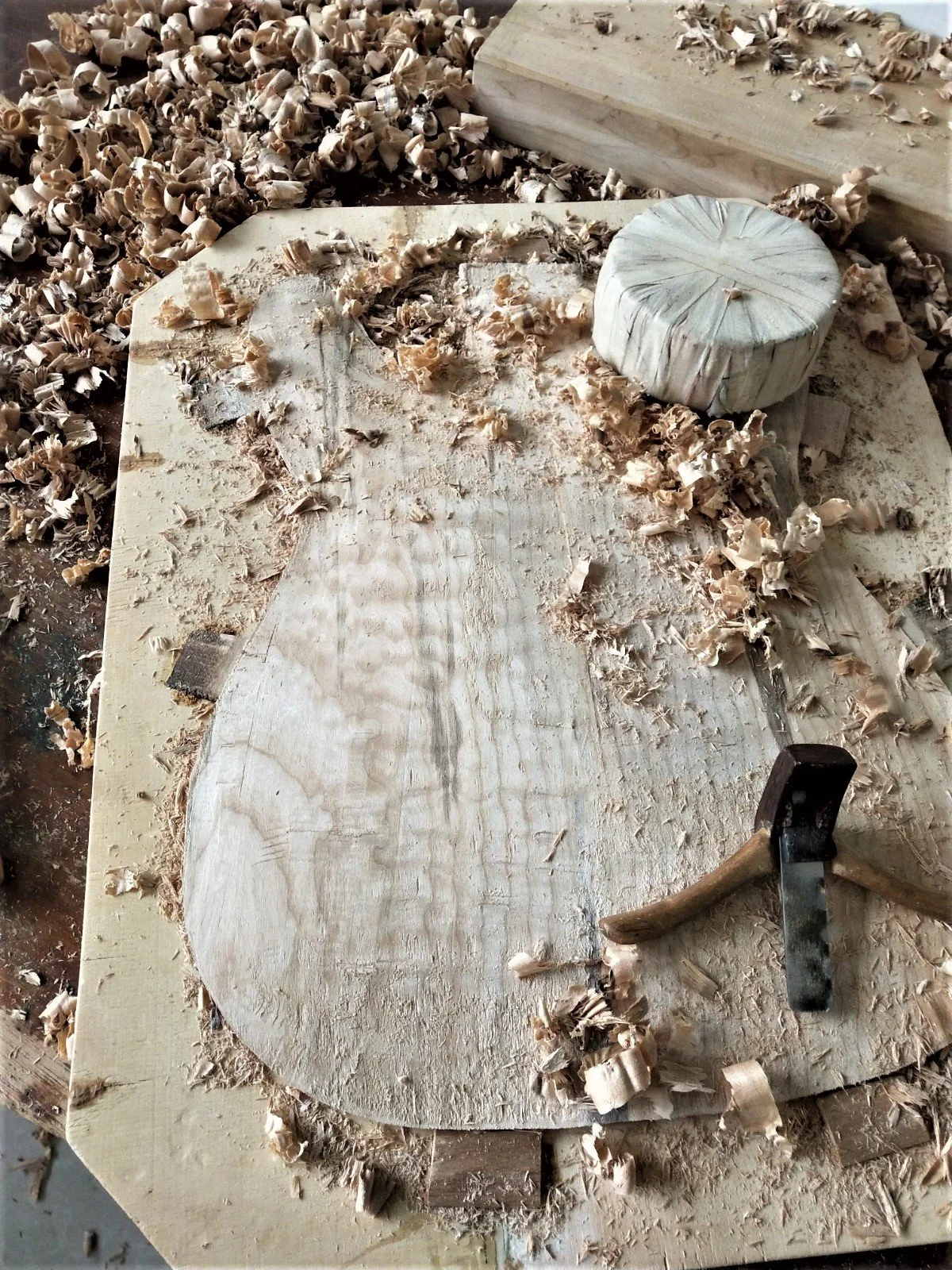THE WOOD
SINKER LOGS
You may be wondering how it is possible that we managed to build a hand carved guitar from such ancient wood. How come this tree is neither fossilized nor brittle? Under the right circumstances, wood can be preserved for thousands of years. In fact, ‘sinker logs’, also known as sinkers, watered/waterlogged wood, river or lake reclaimed wood or deadheads, provides outstanding quality wood products. The wood is easier to saw and dries more evenly. It is also considerably 'calmer' than wood that is dried immediately after felling. Provided it has been professionally dried, the wood is much less likely to suffer from tension and shrinkage cracking.
HOW IT’S PRESERVED
Above water or (wet) soil, wood is exposed to light, oxygen and all kinds of wood-consuming organisms (fungi, insects, bacteria etc), causing it to decay rapidly. However, if a tree is kept under very wet conditions, for example it gets buried on a lake or river bottom after a flood, it is protected from these elements and thus can be preserved for ages. Also, a lack of light and oxygen cause juices and nutrients present in the tree to break down, making it starch-free and thus less sensitive to all sorts of fungi. All these processes help the wood to become much more sustainable.
The color & GRAIN
A confluence of factors caused this tree to evolve its own distinct characteristics in shape, grain, color and texture. A bit like how a diamond is formed: through a combination of time, high temperature and pressure. In this story, a combination of time, water, oxygen, sunlight, nutrients in the soil, the presence (or absence) of bacteria, fungi and insects have all contributed to shape the unique appearance and denseness of the wood grain. These conditions significantly influence the final product. For example, in a muddy soil, the wood fiber absorbs minerals and tannic acids, which give the wood unique hues of grey or green. Sandy soil may cause a log to become more reddish or deeper gold.
In our case, a very dark chocolate brown color has developed completely naturally. The wood has not been treated or stained. It only has multiple very thin layers of transparent nitro lacquer applied to it. Of course, there are other dark brown wood species on the market like ebony, wengé or African blackwood, but most of those species are not suitable for working with wood tools to build a complete semi hollow body guitar with an arched top and back.
LIMITED AVAILABILITY
The availability of underwater wood (let alone 7500 year old wood) in the world is extremely limited. Excavating underwater wood is normally a very labor-intensive, time-consuming and expensive job. It requires expertise, heavy machinery or diving gear and is risky work. Instances in which these logs are found are usually by coincidence.







